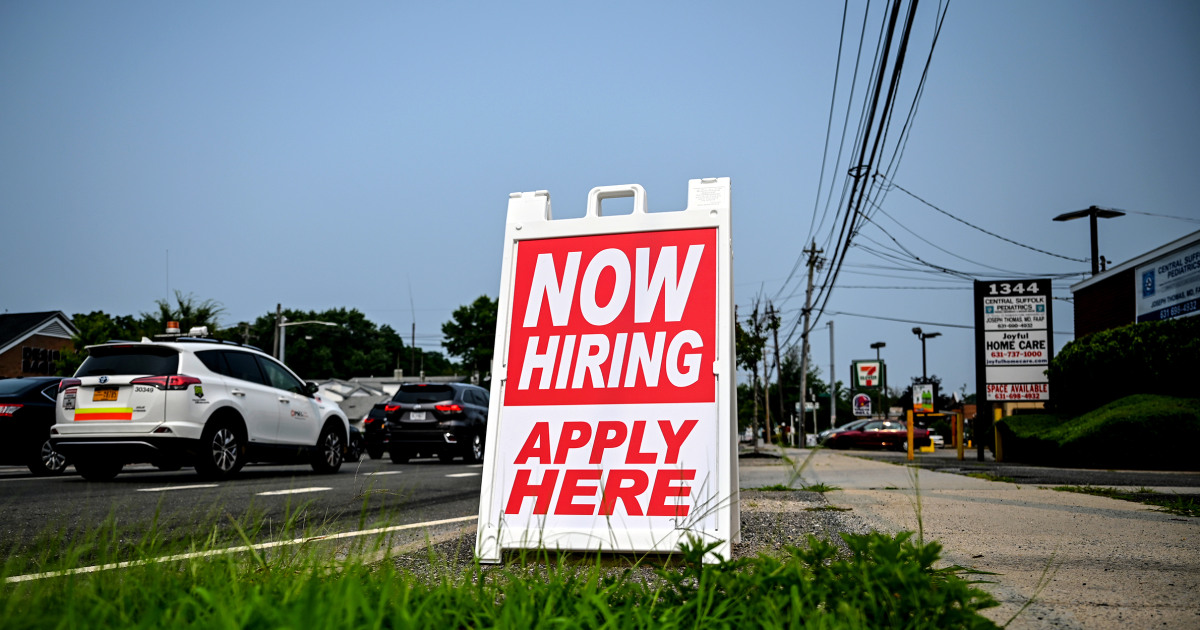Friday’s jobs report is expected to show another relatively healthy month of payroll gains, alongside a stable unemployment rate.
But for anyone looking for a new job, the situation has only deteriorated as the year has dragged on, experts say. At the moment, there is little light at the end of the tunnel for those job seekers.
Forecasts were for 150,000 new jobs added in September, up from 142,000 in August. The unemployment rate was expected to be unchanged from August, at 4.2%.
While the economy continues to add jobs at a steady clip, signs of ongoing labor market weakness have become unmistakable.
The Bureau of Labor Statistics reported this week that the hiring rate had declined to just 3.3%, its lowest level since October 2013, when the U.S. economy was just beginning to emerge from the Great Recession.
Last week, the Conference Board’s closely watched consumer confidence survey fell by the largest amount since August 2021, driven largely by concerns about the labor market. Less than 1 in 3 respondents now say jobs are “plentiful,” while nearly 1 in 5 say they are “hard to get.”
In a statement accompanying the release, Dana M. Peterson, chief economist at the Conference Board, said that although the labor market remains “quite healthy,” workers are encountering fewer hours, slower payroll increases and fewer job openings.
Guy Berger, director of economic research at the Burning Glass Institute, a labor research and consultancy group, said that a few months ago finding a new job was “tough.”
Today, he said, he would downgrade that to “really tough.” Firms are simply figuring out how to do more with fewer employees, something further reflected in rising productivity growth.
“This could be a new thing — a new strategy companies are pursuing,” Berger said. “It definitely seems different.”
And a turnaround in fortunes may not soon come for job searchers either, he said. While Federal Reserve officials have indicated they do not wish to see further signs of labor market deterioration, they are not going to allow it to “come to a boil,” either, especially given that the hiring frenzy of the early part of the pandemic reopening period coincided with a period of surging inflation.
“The chance of us getting to a good time to find a job — it could be a while,” Berger said.
The stress is starting to show up in other data: The share of unemployed workers who have been out of work for more than six months has now climbed six of the last nine months and is now at about 21%.
That is about where it was before the onset of the pandemic. But it is an indication that losing a job increasingly means a longer spell on the sidelines.
There remain positive economic indicators: Layoffs and new filings for unemployment remain subdued. And economists say the Federal Reserve’s latest larger-than-expected rate cut — with more cuts likely to come — should help spur activity in sectors of the economy that rely on lending, like housing, manufacturing and autos.
Gas prices are also unusually low, helping support additional consumer spending.
With some luck, the U.S. should be able to avoid recession, Berger said. But the economy could easily tip into a more precarious state.
For job seekers, that precariousness has become full-blown.
“There is now a major disconnect between people looking for jobs and people who have them,” Berger said.


